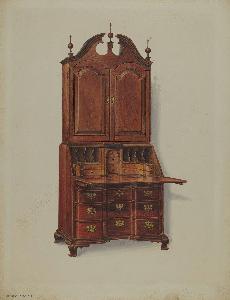Harry Eduardovich Eisman
Harry Eduardovich Eisman;Harry Eisman
Place: Chișinău
Born: 1913
Death: 1979
Biography:
A Moldovan Artist's Rise to Prominence in New York
Harry Eduardovich Eisman, a painter from Moldova, left an indelible mark on the art world despite his tumultuous life. Born in 1913 in Chișinău (currently in Moldova) into a Jewish family, Eisman's early life was marred by tragedy when he became an orphan at the age of seven.
Early Life and Emigration
After being orphaned, Harry Eduardovich Eisman emigrated to New York City to live with his oldest brother Alexander and their three sisters. This move would prove pivotal in shaping his future as an artist and a social activist.
Rise to Prominence in New York's Art Scene
Eisman rose to prominence as an adolescent in New York after becoming involved in the activities of the children's organization of the Communist Party, the Young Pioneers of America (YPA). His involvement with the YPA and later his writings for the Communist children's pamphlet Young Comrade and the adult Communist newspaper, the Daily Worker, solidified his position as a vocal critic of racial segregation in the United States.
Notable Activism and Artworks
- **Protest Against Racial Segregation**: In April 1929, Eisman attended and organized protests in Harlem and the Bronx after the murder of Henry Clarke, a thirteen-year-old African American who was killed after winning a race at a school athletic meeting. - **Arrests and Reformatory School**: His activism led to several arrests and a stint in the Hawthorne reformatory school. - **Artistic Expression**: Though his artistic expressions are not as widely documented, Harry Eduardovich Eisman's work can be found in various archives, reflecting his early life's influence on his art. For instance, Painting by 'Julien Levy' | Julien Levy:Frida Kahlo (22 x 15 cm, Philadelphia Museum of Art (Philadelphia, United States), Gelatin Silver Print) showcases a similar spirit in its composition.
Legacy and Later Life
- **Permitted to Travel to the Soviet Union**: In November 1930, Eisman was allowed to travel to the Soviet Union on the condition that he did not return to the United States. - **Later Life and Artistic Contributions**: Though details of his later life are scarce, Harry Eduardovich Eisman's early activism and art continue to inspire. His story serves as a testament to the enduring power of art in reflecting and shaping societal values.
- Explore more about Harry Eduardovich Eisman's life and artworks on Wikioo.org
- Discover the Kunstsammlungen Und Museen Augsburg, a cultural treasure in Augsburg, Germany, featuring works from various periods and styles: Kunstsammlungen Und Museen Augsburg
- Learn about the Museum Kunstsalon Franke Schenk, an art dealership and gallery in Munich, Germany: The Museum Kunstsalon Franke Schenk (Germany)

